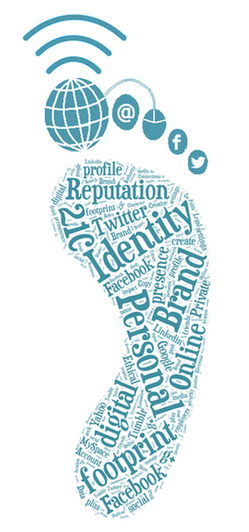
We are told the internet never forgets — but the more uncomfortable truth is that it also refuses to stay online. Every search, swipe, selfie, and scroll leaves traces that drift into the physical world, quietly shaping how we are perceived, tracked, and even treated offline. The digital footprint has broken containment. What once lived in servers and advertising databases now trails behind us like an invisible leash, tugging at our real-world experiences in ways most people never see.
This isn’t science fiction. It’s the evolution of surveillance capitalism, location data markets, predictive algorithms, and increasingly interconnected biometric and behavioural systems. And it means that privacy violations don’t just threaten your online identity — they influence your day-to-day life, your freedoms, and your future opportunities.
Let’s explore how.
1. Your Phone Is a Location Beacon — Even When You Think It’s Off
Modern smartphones are constant broadcasters. Apps collect precise GPS coordinates; Bluetooth pings public beacons; cellular networks log your movement in physical space. “Location services off” often only pauses one layer of tracking.
How this spills into the real world
- Retailers use Wi-Fi pings to track how long you linger in stores.
- Police departments purchase commercial location datasets instead of requesting warrants.
- Political organizations target neighbourhoods based on aggregated movement data.
- Insurance companies explore mobility patterns to assess “risk behaviours.”
You aren’t just a digital user — you’re a moving data point tied to geography, habits, and routines. Your walk to the coffee shop tells a story now.
2. Facial Recognition Turns Social Photos Into Physical Surveillance
Posting a photo used to be harmless. Today, every image contributes to biometric databases, many built without consent. Social platforms auto-tag faces; doorbell cameras share feeds with police networks; malls and sports venues quietly deploy face-matching systems.
Even blurred faces can be reverse-matched with AI.
Even masked faces can be partially recognized via gait analysis.
Offline consequences
- Being monitored at protests or public gatherings
- Identified and flagged by automated law-enforcement systems
- Denied access to stores due to “security watchlists”
- Immigration and border actions triggered by third-party facial matches
Your face — the most personal identifier — has become a data credential you can’t change, revoke, or leave at home.
3. Metadata: The Small Digital Clues That Build Real-World Profiles
You may not post your address, but your photos share geotags. Your messages hold device fingerprints. The times you’re active online outline sleep and work schedules.
Metadata — the data about your data — fills in the gaps you never intended to reveal.
In the physical world, metadata fuels
- Credit assessments and loan eligibility
- Employment risk evaluations
- Targeted ads influencing daily purchases and routines
- Political persuasion campaigns tailored to your personality traits
- Predictive policing in your neighbourhood
You didn’t hand anyone your personal profile — you generated it with every tap and upload.
4. From Ad-Tracking to Life-Shaping Influence
Ad tech no longer simply recommends shoes. It shapes behaviour, spending, and decision pathways.
Examples
- Grocery store coupons customized based on online food searches
- Insurance rates influenced by health tracker or smart device data
- Real-estate ads targeted to where algorithms predict you’ll move next
- Job ads hidden from older users to shape workplace demographics
- Reputational scores quietly used in rental and financial decisions
This isn’t just personal advertising — it’s personalized environments.
Your online behaviour becomes the scaffolding around your offline life.
5. Digital Vulnerabilities Become Physical Safety Risks
Online weaknesses can turn into real-world dangers:
| Online Action | Offline Consequence |
|---|---|
| Revealing travel plans | Home targeted for burglary |
| Posting kids’ photos | Face data entering school surveillance or dark-web databases |
| Revealing emotional struggles | Life-insurance rate discrimination |
| Sharing location tags | Stalking or personal targeting |
| Using insecure IoT devices | Physical intrusion through hacked smart-locks or cameras |
Digital carelessness is now a physical-world vulnerability.
A New Era: The Fusion of Digital Self and Real Self
We used to have a public life and a private life. Now we have:
- A physical identity
- A digital identity
- A data-constructed identity
…and all three bleed into each other.
You may never meet the version of you that exists in data markets, but it influences things you experience every day — pricing, opportunity, security checks, social treatment.
Your digital footprint isn’t a shadow anymore.
It’s your second passport — and it follows you everywhere.
How to Break (or Loosen) the Digital Leash
You can’t erase yourself from the internet, but you can reduce your trace.
Practical defences
- Turn off unnecessary app permissions
- Use privacy-focused browsers and search engines
- Disable default location tagging in photos
- Limit family and children’s digital exposure
- Use a VPN on public networks
- Choose biometric-free logins where possible
- Rotate email identities for different services
- Request data removal from brokers (many allow it)
Psychological shift
Treat your data like your physical belongings.
You wouldn’t hand a stranger your house key — don’t hand them your life patterns.
Final Thought: A World Built on Quiet Tracking
We live in a moment where data is power and privacy is resistance.
Not because we want to hide anything, but because autonomy depends on it.
The digital world bleeds into the physical one — and understanding the invisible leash is the first step toward reclaiming the slack.
The internet remembers.
But you don’t have to let it follow you home.
Leave a Reply